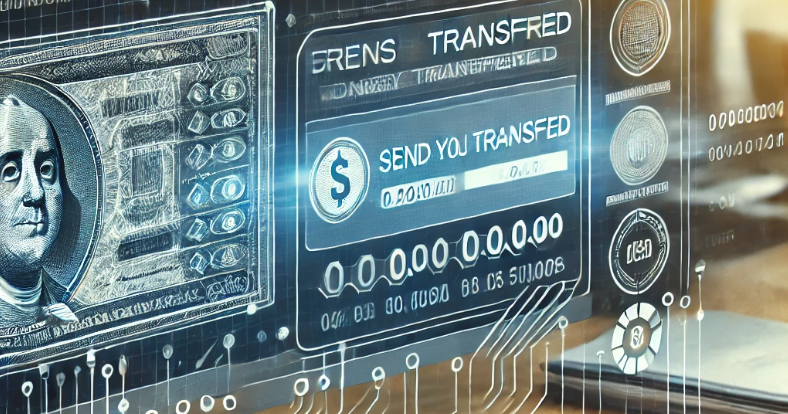- Remittance
- Exchange Rate
- Stock
- Events
- EasyCard
- More
- Download
Costs, Taxes, and Security Issues of Large Remittances to the United States
In the context of a globalized economy, making large remittances to the United States is becoming increasingly common. Whether for business investments, family fund transfers, or tuition payments, the cross-border movement of large sums of money is involved. However, when performing such operations, it is crucial to consider the costs, taxes, and security issues of remittances. These factors not only affect the actual amount received but may also involve legal compliance and the safety of personal assets.

Costs of Large Remittances to the United States
The costs of remittances mainly include the following components:
- Transfer Fees: These are the basic fees charged by banks or remittance service providers. Different institutions have varying fee standards, typically ranging from a few dollars to several tens of dollars.
- Exchange Rate Margins: When remitting money, banks or service providers use an exchange rate different from the market rate, earning a margin from the difference. This hidden cost is often overlooked but can be significant for large remittances.
- Intermediary Bank Fees: If the remittance needs to be processed through intermediary banks, each intermediary bank may charge additional fees. This is particularly common in cross-border remittances.
- Receiving Bank Fees: In some cases, the receiving bank may also charge certain fees, especially when the remittance involves currency exchange. Ensure that the recipient is aware of and prepared for potential receiving fees to avoid a shortfall in the received amount.
Comparison of Fees for Different Remittance Methods
- Bank Wire Transfers: Bank wire transfers are the most traditional remittance method, with higher costs but better security and reliability. Typically, each wire transfer fee ranges from $20 to $50, depending on the bank and the amount remitted.
- Specialized Remittance Tools: Specialized remittance tools like Western Union, MoneyGram, and BiyaPay offer transparent exchange rates and lower fees while processing transactions quickly, making them a preferred choice for many.
Tax Issues When Remitting Money to the United States
Understanding tax issues is crucial when making large remittances. The United States has strict tax regulations to ensure the transparency and legality of all cross-border fund transfers.
- Tax Reporting for Remittance Limits
Under the Anti-Money Laundering Act and the Bank Secrecy Act, any remittance exceeding $10,000 must be reported to the U.S. Department of the Treasury. Users should be aware of these regulations to ensure that all remittance transactions are legal and compliant.
- Declaration Requirements for Remittance Amounts
When making large remittances, banks or remittance platforms usually require detailed identity information and proof of funds’ source. This information helps ensure the transparency and legality of the transactions. Failure to properly declare may result in fines or legal liability. Therefore, it is crucial to prepare all necessary documents, including bank statements, identification, and legal proof of the funds’ source.
- Tax Responsibilities and Obligations
If the remittance involves investment or income, the recipient may need to file taxes in the United States. The remitter is responsible for ensuring that all remittances comply with U.S. tax regulations, including paying any applicable taxes and ensuring the transparency and legality of all funds’ sources and uses.
Security Issues When Remitting Money to the United States
Common risks of large remittances include fund loss, information leakage, interception of remittances, and online fraud. For instance, scammers may impersonate others to steal information. Understanding these risks can help prevent them.
- Choose a Secure Remittance Method: Methods like traditional bank wire transfers or mainstream remittance tools like BiyaPay offer higher security. Ensure the platform has encryption technology and security protocols by reviewing user feedback and professional evaluations to select a reliable one.
- Security Measures
When remitting money, the following measures can enhance security:
- Two-Factor Authentication: Choose services that offer two-factor authentication to add a layer of security and prevent unauthorized access.
- Real-Time Tracking: Use services that provide real-time tracking of the remittance status to ensure funds are not tampered with or lost and to act promptly if there are any anomalies.
- Security Notifications: Enable update notifications to handle any anomalies promptly. Notifications can be sent via SMS or email.
Understanding the costs, taxes, and security issues is crucial when making large remittances to the United States. Choosing the appropriate remittance method, such as bank wire transfers or specialized remittance tools, ensures that funds reach their destination quickly and safely. For example, the multi-asset trading wallet BiyaPay enables local transfers in most countries or regions worldwide, with fast transfer speeds, no remittance limits, and support for the online real-time exchange of over 20 major fiat currencies and more than 200 mainstream digital currencies.
In conclusion, through careful research and selection, you can find the remittance method that best suits your needs, ensuring your funds reach their destination safely and promptly.

























